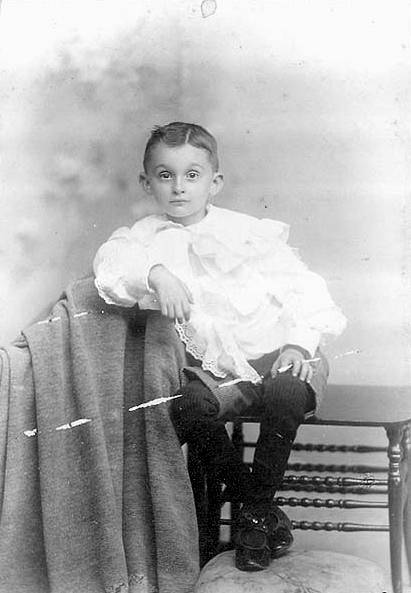
Figure 1.--This boy was from Reading, Pennsylvania. He looks to be about 6 years old. The portrait is undated, but was probably taken in the 1890s. His Dauntleroy blouse has a very fancy collar and front, but plain sleeve cuffs. |

|
The basic elements of a blouse are the collat, sleeves and cuffs, front, and bottom hem. There are many variations on these basic elements. The characteristics of these elements have changed very significantly over time. The collar is probably the most noticeable element of the blouse. Blouses had attached collars. The basic exception to this was pin-on lace collaes. Collars have varied very substantially in size. Very small collars were common in the mid-19th century and very large by the late-19th cetury. We also notice collars with back flaps in the late 19th and ealy 20th century. Fronts were generally plain, but we notice very fancy ones during the Fauntleroy craze of the late-19th century. Some of the lace collars pinned on, but many of the large collars seen in the old photgraphs are blouses with attached collars. A good example is the Kemp brothers in 1898. Blouses had long sleeves until after World War I. We note some boys with short sleeves at the turn-of-the 20th century, but I think that they have just rolled up their sleeves. Some blouse sleeves were done with fancy cuffs, especially during the Fauntleroy craze. The cuffs might be made to match the collar. Blouses in the late 19th centiry were dne wkth draw-string closures which created a bloucing effect. After World War I they were somply done without tails.
We see various blouse collars over time. The earliest blouses seem to have simply afopted the collars of girls' dresses. One such style was an open neckline, often bordered with trim. A good example is unidentified siblings in the late-1850s. The collar is probably the most noticeable element of the blouses that appeared in the late-19th century. Blouses had attached collars. The basic exception to this was pin-on lace collaes. Collars have varied very substantially in size. Very small collars were common in the mid-19th century and very large by the late-19th cetury. We also notice collars with back flaps in the late 19th and ealy 20th century. Fronts were generally plain, but we notice very fancy ones during the Fauntleroy craze of the late-19th century. Some of the lace collars pinned on, but many of the large collars seen in the old photgraphs are blouses with attached collars. A good example is the Kemp brothers in 1898.
Blouses had both long and short sleeves. This again followed the designs of dresses. A good example is unidentified siblings in the late-1850s. The collar is probably the most noticeable element of the blouses that appeared in the late-19th century. We no longer see short sleeves in the laste-9th century. Blouses had long sleeves until after World War I. We note some boys with short sleeves at the turn-of-the 20th century, but I think that they have just rolled up their sleeves. Some blouse sleeves were done with fancy cuffs, especially during the Fauntleroy craze. The cuffs might be made to match the collar.
Early blouses were done with-button-on styling. They would not have been called bclouses at the time. We refer to them as blouses primarily because there were no shirt tails. Button-on styling was not bjust a fashion stylistic matter. It had an importany practical function. Younger boys had a serious problem. With their slender waists--it as difficult to hold up pants. Girls did not have this problem bcause dresses were held up by the shoulders. We do not see many boys wearing suspenders at mid-century. Nor were belts common for boys. What we see is button-on styling. Button sewn ino the blouse waistinf, fitted into button holes along the waist of the pants. The buttons seem to have more of more importance sylisisticlly on some outfits more than others. They varied in size. Some were small, ohers were larger making more of a visual stylistic impact. Blouses in the late-19th century were done with draw-string closures which created a chsacteristivc bloucing r billowing affect that spilled out out overthe waistline. After World War I, bluses were simply done without tails. In this case they could not be used to hold up the boy's pants.
Navigate the Boys' Historical Clothing Web Site:
[Return to the Main American blouse page]
[Introduction]
[Activities]
[Biographies]
[Chronology]
[Clothing styles]
[Countries]
[Bibliographies]
[Contributions]
[FAQs]
[Glossaries]
[Images]
[Links]
[Registration]
[Tools]
[Boys' Clothing Home]
